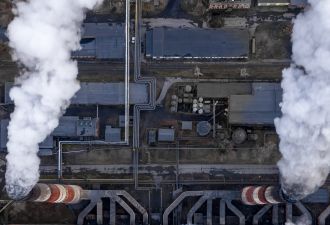Washington Post: Top Leaders of Solyndra Repeatedly Misled Federal Officials
Top leaders of a troubled solar-panel company that cost taxpayers a half-billion dollars repeatedly misled federal officials and omitted information about the firm’s financial prospects as they sought to win a major government loan, according to a newly-released federal investigative report.
The report, written by the Energy Department’s Inspector General, summarizes the findings of the four-year-long investigation conducted by FBI agents and investigators from the Office of the Inspector General.
Solyndra officials told the government in 2009, for example, that they had firm contracts to sell $2.2 billion worth of their unique cylindrical solar panels over the next five years. But behind the scenes, investigators found, Solyndra was struggling with customers who were balking at the high panel prices, arranging secret side deals to pay discounted prices, and refusing to buy as many panels as they once promised.
Bloomberg: Oil Surges Most in Six Years on Faster U.S. Economic Growth
Oil jumped the most in more than six years, caught up in a relief rally that swept the globe as the U.S. economy grew more than predicted.
West Texas Intermediate futures rose 10 percent, the biggest gain since March 2009. U.S. gross domestic product grew at a 3.7 percent annualized rate in the second quarter, exceeding all estimates of economists surveyed by Bloomberg. The Standard & Poor’s 500 Index headed for its biggest two-day gain since 2009 as Chinese shares snapped a five-day losing streak.
Scientific American: Hawaii First to Harness Deep Ocean Temperatures for Power
A small but operational ocean thermal energy conversion (OTEC) plant was inaugurated in Hawaii last week, making it the first in the world. The opening of the 100-kilowatt facility marked the first time a closed-cycle OTEC plant will be connected to the U.S. grid. But that amount of energy production can power only 120 Hawaiian homes for a year, a tiny drop in the ocean for the island state’s own energy needs. What promise OTEC holds for other regions is even less certain.
The United States entered OTEC research in 1974 with the establishment of the Natural Energy Laboratory of Hawaii Authority (NELHA). But after decades of investment in the development of OTEC, this new Navy-bankrolled project is still seen by many as only a way to test the process rather than to secure the place of OTEC as a viable renewable technology.
NPR: New Tesla Breaks Consumer Reports' Ratings Scale
With a rare mix of blazing speed, safety and energy efficiency, the new Tesla Model S P85D left the folks at Consumer Reports grasping for ways to properly rate the car, after it scored a 103 -- out of 100. "It kind of broke the system," says Jake Fisher, director of the magazine's auto test division.
Listing the all-electric car's attributes, including its improved handling and stopping power, Fisher says, "We're seeing numbers that we haven't seen before. So this kind of blew out the system. We're giving it a score of 100."
Wheeling Intelligencer: Natural Gas Rigs Being Shut Off
For the first time since the U.S. Energy Information started tracking the data, natural gas production from shale formations -- including the Marcellus and Utica -- is set to decline in September amid a glut of supplies related to inadequate pipeline infrastructure.
Also, with natural gas prices down by more than $1 per unit compared to this time last year -- and crude oil crashing to a value lower than $39 per barrel -- both Ohio and West Virginia continue to see fewer rigs drilling within their borders.
According to the EIA, all U.S. shale natural gas production recently reached a record high of 45.6 billion cubic feet per day. To put that in context,1 Bcf can power 85,000 road trips across the U.S. However, officials believe the number will decline to 44.9 Bcf per day next month.



